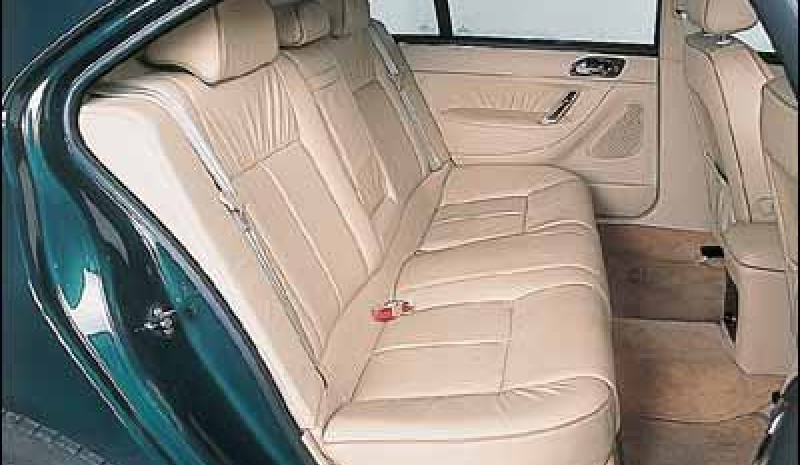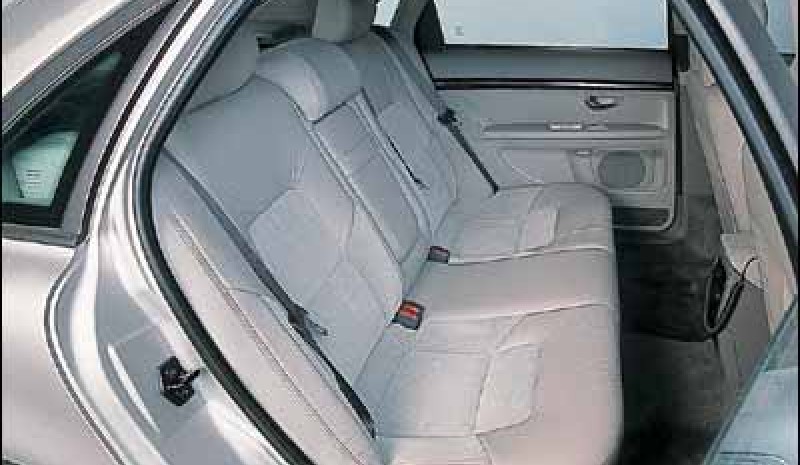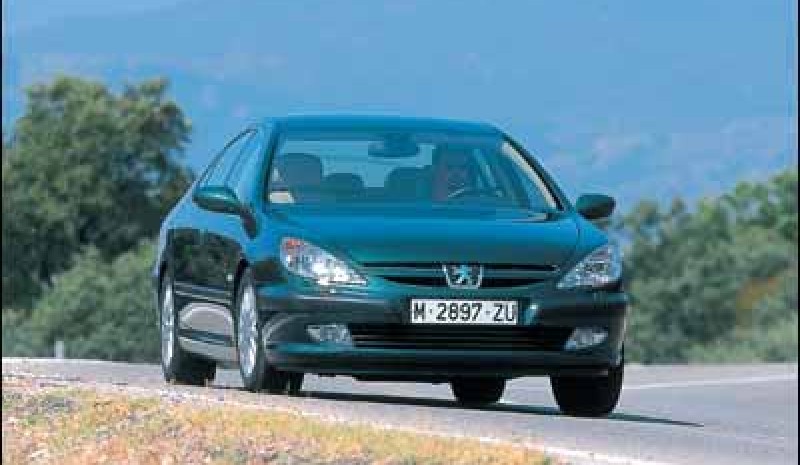Peugeot 607 2.2 HDi / Volvo S80 D5
The arrival of the engine D5 to the Volvo range puts the Swedish brand as a reference among the saloons prestigious turbodiesel while the 607 2.2 HDi continues as a tempting option to enter the rendering industry because of its favorable ratio content / price.
Prestigious saloon with supersoft art diesel sedan representation or general builder with high level of equipment and more moderately priced engine? Two different approaches with obvious points of convergence in the size and service they can provide their drivers. Choose one or the other, Volvo S80 D5 or Peugeot 607 2.2 HDi, may depend on the money or how they perceive the potential buyer each brand. But again and compelling products are designed and are undoubtedly a reference in many sections within their respective positions within the segment.
Volvo needed a next-generation diesel engine because, despite their excellent qualities, the five-cylinder Audi source that equipped the S80 was already getting a bit old. The brand, which now belongs to Ford group had already begun to develop its latest creation Diesel based aluminum engine five cylinders when it changed ownership and now this engine is a bigger picture that will allow the best technical development and where you can enjoy an interesting economy of scales as may be applied, if deemed necessary, in Jaguar and Ford.
The S80, and accredited comfort and reduced noise level, get this new engine to be further refined and does so with a selling price of 6,149,627 ptas in the basic variant, which faces the 607 2.2 HDi which is situated, no special equipment at 5,762,200 ptas. While Swedish product price reflects the increased engine power and positioning of the brand among the elite, the 607 is very competitive in terms of content and remarkable quality finishes and performance in general.
As with the D5 engine Volvo finishes placed in almost all sections at the level of its German rivals, Peugeot, with the 607 2.2 HDi, generously equipped and very well done, significantly narrow the differences that their top models keep the more expensive products segment. The list of options Volvo is large, and as with the Teutonic brands, sophistication and quality of these optional is priced very high so stop butt the model before removing from the dealer pulls the price up.
The new five-cylinder diesel Volvo line is presented with the latest technologies, feeding through common second generation injecting 1,600 bars instead of 1350 bar, 4 valves per cylinder and variable geometry turbocharger. The motor 607 is the familiar 2.2 HDi powered through common conduit 136 which delivers the first generation and CV might be termed rear step for diesel in this segment.
The interiors of both are clearly different but have in common a high level of finishes. More formal and discreet the 607 and some American bias, with a profusion of controls -ergonómicamente situados- the Volvo. For its quality, beautification pack Peugeot Ebano offers a look that makes it difficult to accept that inside the 607 belongs in fact to a vehicle located about 300,000 pesetas below the Volvo S80. Clearly, the price / equipment ratio opts for French product.
Moreover, the 607 takes advantage well its greater length to give relief to the legs of the occupants of the rear seats, winning four centimeters compared to Volvo, but clearly losing with it in play for the head, so that the habitability of both can be considered very even. According to its positioning, the S80 is available with a range of accessories comfort or luxury that are not available in 607 such as headrests electrically folding back and ride height control.
HDi engine operation, being a four-cylinder is very nice. Logically, with its 2.2-liter engine this HDi can not offer the 607 engine performance of the Volvo, which has greater capacity and new generation. Injection system common rail, four valves per cylinder and variable geometry turbocharger favor its progressive and smooth operation. It is well soundproofed and fulfills its mission properly propel a basic representation sedan but sometimes missing some oomph in recoveries. Actually, what you would do well to body 607 is a more powerful turbodiesel, in line with those of its rivals, especially since the segment is being developed to significantly higher power and chassis have enough nobility to withstand unapologetic greater thrust on its wheels. Moreover, despite its nobility, inline four-cylinder fails to dampen vibrations as well as five Swedish cylinders.
With this engine, we corroborated the experienced with previously tested S60: stands out for its extreme softness, excellent soundproofing and a touch on as much or more comfortable than the best Mercedes driver. This 2.5-liter capacity becomes today a benchmark, both the middle and in the saloons of representation within its power band. While PSA 2.2 mounted on the 607 is fairly quiet, the unit of Volvo shines for its excellent balance between push and smoothness. Idling hardly feels and torque delivery is so progressive, that is able to treat with kid gloves occupants, even in moments of greatest power acceleration. Their presence is seen in the vicinity of 3,800 rpm where the quality of the noise is not as strong. But before and after that regime seems to have no engine, to the extent that is possible to roll very fast feeling just the normal aerodynamic noise.
Prestigious saloon with supersoft art diesel sedan representation or general builder with high level of equipment and more moderately priced engine? Two different approaches with obvious points of convergence in the size and service they can provide their drivers. Choose one or the other, Volvo S80 D5 or Peugeot 607 2.2 HDi, may depend on the money or how they perceive the potential buyer each brand. But again and compelling products are designed and are undoubtedly a reference in many sections within their respective positions within the segment.
Volvo needed a next-generation diesel engine because, despite their excellent qualities, the five-cylinder Audi source that equipped the S80 was already getting a bit old. The brand, which now belongs to Ford group had already begun to develop its latest creation Diesel based aluminum engine five cylinders when it changed ownership and now this engine is a bigger picture that will allow the best technical development and where you can enjoy an interesting economy of scales as may be applied, if deemed necessary, in Jaguar and Ford.
The S80, and accredited comfort and reduced noise level, get this new engine to be further refined and does so with a selling price of 6,149,627 ptas in the basic variant, which faces the 607 2.2 HDi which is situated, no special equipment at 5,762,200 ptas. While Swedish product price reflects the increased engine power and positioning of the brand among the elite, the 607 is very competitive in terms of content and remarkable quality finishes and performance in general.
As with the D5 engine Volvo finishes placed in almost all sections at the level of its German rivals, Peugeot, with the 607 2.2 HDi, generously equipped and very well done, significantly narrow the differences that their top models keep the more expensive products segment. The list of options Volvo is large, and as with the Teutonic brands, sophistication and quality of these optional is priced very high so stop butt the model before removing from the dealer pulls the price up.
The new five-cylinder diesel Volvo line is presented with the latest technologies, feeding through common second generation injecting 1,600 bars instead of 1350 bar, 4 valves per cylinder and variable geometry turbocharger. The motor 607 is the familiar 2.2 HDi powered through common conduit 136 which delivers the first generation and CV might be termed rear step for diesel in this segment.
The interiors of both are clearly different but have in common a high level of finishes. More formal and discreet the 607 and some American bias, with a profusion of controls -ergonómicamente situados- the Volvo. For its quality, beautification pack Peugeot Ebano offers a look that makes it difficult to accept that inside the 607 belongs in fact to a vehicle located about 300,000 pesetas below the Volvo S80. Clearly, the price / equipment ratio opts for French product.
Moreover, the 607 takes advantage well its greater length to give relief to the legs of the occupants of the rear seats, winning four centimeters compared to Volvo, but clearly losing with it in play for the head, so that the habitability of both can be considered very even. According to its positioning, the S80 is available with a range of accessories comfort or luxury that are not available in 607 such as headrests electrically folding back and ride height control.
HDi engine operation, being a four-cylinder is very nice. Logically, with its 2.2-liter engine this HDi can not offer the 607 engine performance of the Volvo, which has greater capacity and new generation. Injection system common rail, four valves per cylinder and variable geometry turbocharger favor its progressive and smooth operation. It is well soundproofed and fulfills its mission properly propel a basic representation sedan but sometimes missing some oomph in recoveries. Actually, what you would do well to body 607 is a more powerful turbodiesel, in line with those of its rivals, especially since the segment is being developed to significantly higher power and chassis have enough nobility to withstand unapologetic greater thrust on its wheels. Moreover, despite its nobility, inline four-cylinder fails to dampen vibrations as well as five Swedish cylinders.
With this engine, we corroborated the experienced with previously tested S60: stands out for its extreme softness, excellent soundproofing and a touch on as much or more comfortable than the best Mercedes driver. This 2.5-liter capacity becomes today a benchmark, both the middle and in the saloons of representation within its power band. While PSA 2.2 mounted on the 607 is fairly quiet, the unit of Volvo shines for its excellent balance between push and smoothness. Idling hardly feels and torque delivery is so progressive, that is able to treat with kid gloves occupants, even in moments of greatest power acceleration. Their presence is seen in the vicinity of 3,800 rpm where the quality of the noise is not as strong. But before and after that regime seems to have no engine, to the extent that is possible to roll very fast feeling just the normal aerodynamic noise.




